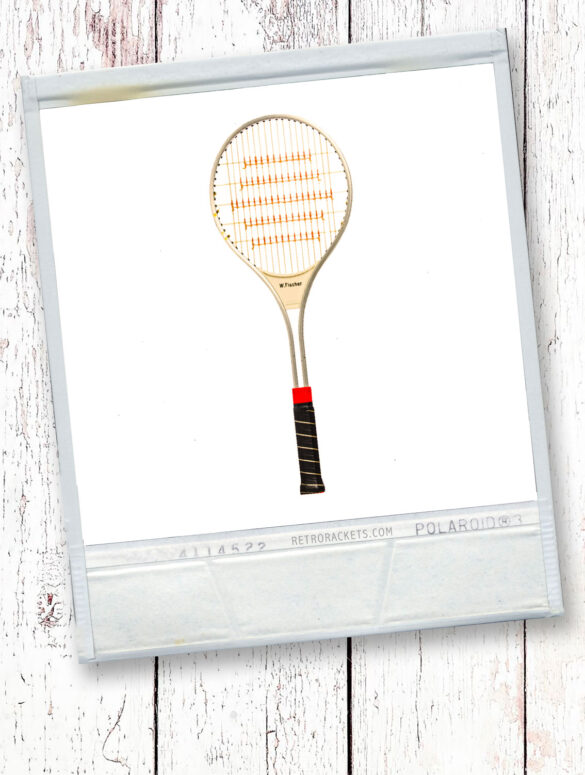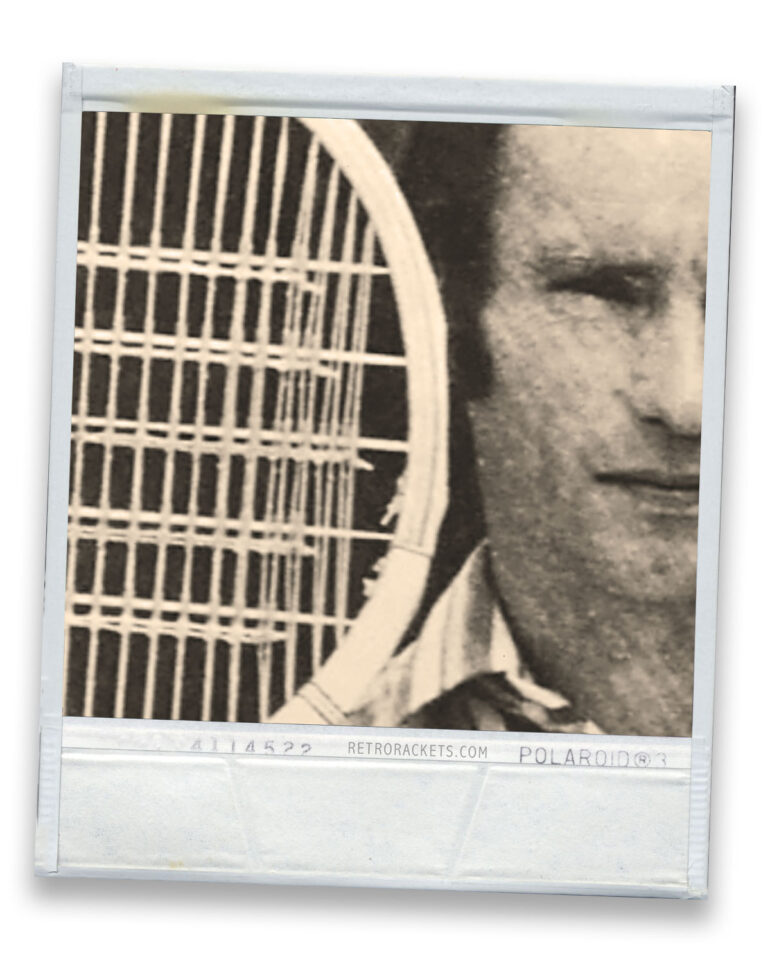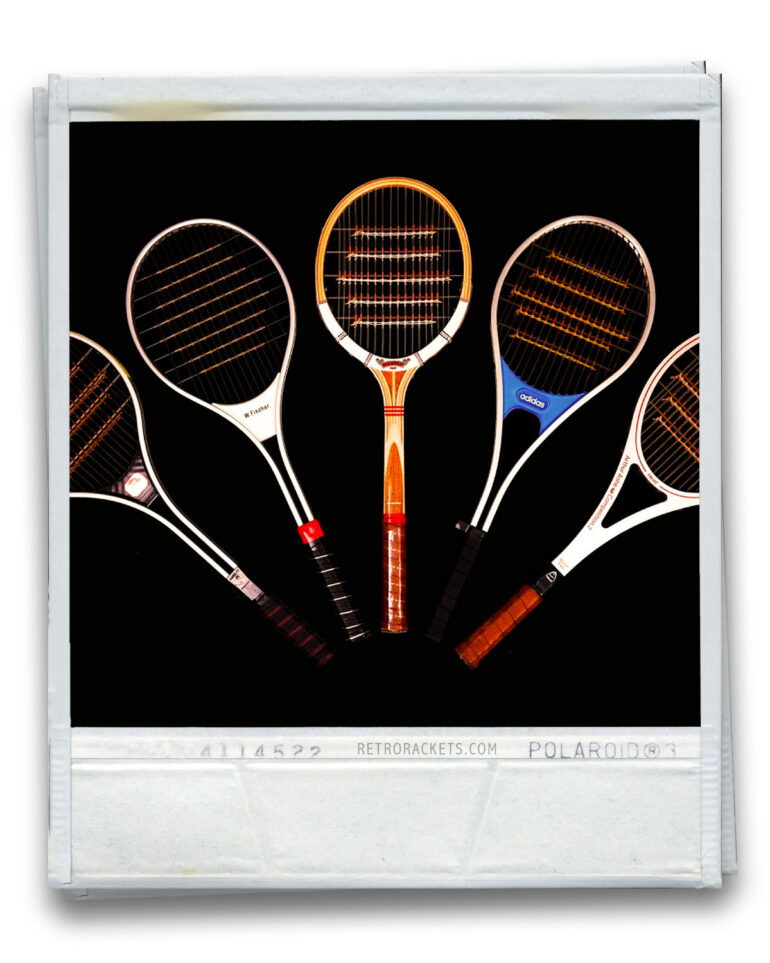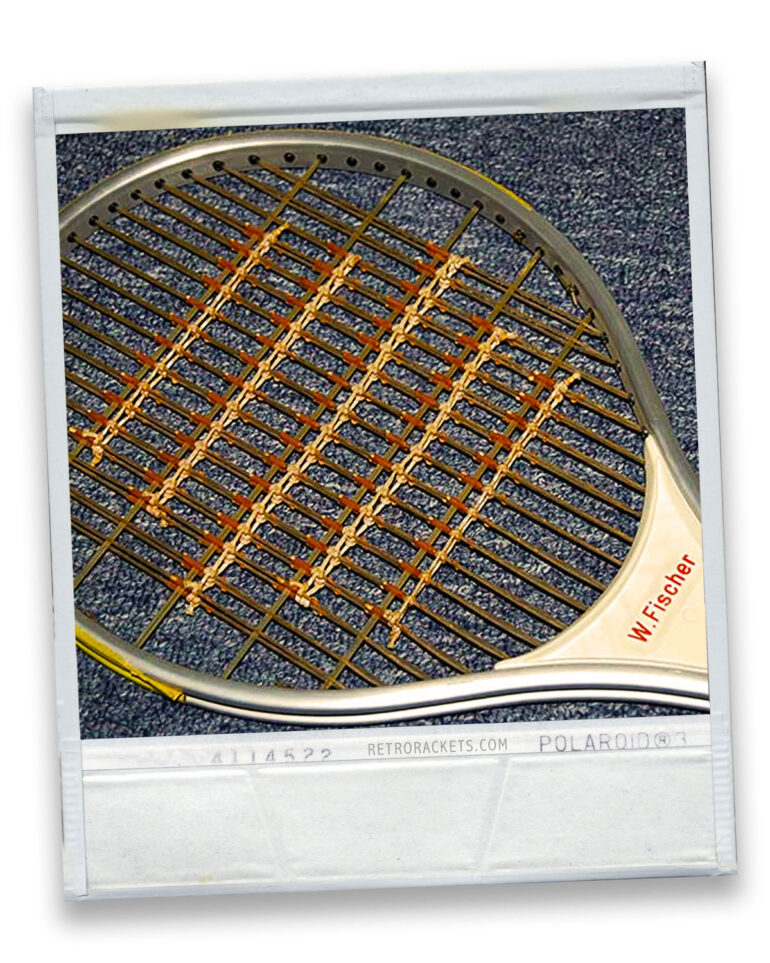In the world of tennis, innovation and creativity have led to remarkable advancements in equipment and playing styles. One such invention that stands out as a legendary tale is the “Spaghetti Racket.” What’s interesting is, the innovation was not a racket, but an unconventional stringing method, devised by Werner Fischer, an horticulturalist from Vilsbiburg, Germany. The oddity has piqued the curiosity of tennis enthusiasts worldwide.
The Birth of the “Spaghetti Racket”
The double-strung spaghetti method was developed in 1971 (and later patented) when Werner Fischer experimented with a radical idea to enhance racket performance but it didn’t make an appearance in a professional setting until 1977. Fischer was a league player in a local tennis club and horticulturalist by trade. One day he was transfixed while watching a spider build a web, which is incredibly strong but flexible at the same time, at which time he had the eureka idea: why hasn’t anyone used similar methods in order to string tennis rackets?
The Unconventional Stringing Method
Fischer sought to create a method using a double-stringing pattern, that would provide players with unique advantages on the court. While the mains are double up, thus sandwiching the cross strings (of which only 5 are used, allowing for more cushioning). Then an intricate pattern is woven between the crosses in order to keep the strings in place and allowing them to shift simultaneously. It’s this intricate, busy pattern, which led players to say it looks like “a bunch of spaghetti”.
This novel approach aimed to increase the amount of time the surface of the ball made contact with the strings, generating more spin and control during play. One was also able to smash the ball and have it remain in-bounds with an unseen level of top-spin at the time.
The double-strung spaghetti pattern was a fascinating and remarkably effective method in tennis. These rackets had a brief but transformative heyday, making a significant impact on the game. However, their success and uniqueness were short-lived, as they were banned in less than a year after their introduction in 1977.
The “Spaghetti Racket” in Action
As word of the “Spaghetti Racket” spread, curious tennis players and enthusiasts flocked to witness its potential benefits firsthand. The new stringing method showcased intriguing characteristics, allowing players to execute shots with additional spin, creating unpredictable trajectories that were extremely challenging, even for the world’s best players.
It is said that some players were so proficient with the spaghetti rackets that they were able to hit chip shots with so much under-spin that the balls would bounce back onto their side of the court, making it impossible to return. Players hit the ball much flatter back then so they became incredibly frustrated when the balls would hit the court and shoot off to the left, right or dive at the last second, having them swinging at air. It was like witchcraft, something like that had never been seen before and the world of tennis was absolutely unprepared.
Fischer and his league team members played in local tournaments but after they started using the Spaghetti Racket, they managed to advance and win national league matches. People were astounded by what they regarded as a rag-tag team of unknown individuals entering the elite level and cleaning house. Word of the “Wunderwaffe” (silver bullet) began to spread amongst the pro ranks.
Controversy and Impact
The introduction of the “Spaghetti Racket” was met with mixed reactions from the tennis community. Some players and coaches expressed enthusiasm for the increased spin and control, while others questioned its legality and potential impact on the sport. The International Tennis Federation (ITF) closely scrutinised the new stringing method, leading to discussions about its fairness and potential advantages.
It was late in the 1977 season, in Aix-en-Provence, that Ilie Nastase was pitted to play against one of the world’s greatest at the time, Argentina’s Guillermo Vilas, the golden era’s master of clay. Vilas was on a 53-match clay winning streak at the time and absolutely dominating the field that year with 16 titles. Nastase had actually borrowed an Adidas racket (which happened to be his racket sponsor) which was strung in the spaghetti method from another player. He overwhelmed and frustrated Vilas so much during the match, that Vilas literally walked off the court and forfeited the match, thus ending his win-streak. Spectators were crying out to Nastase “Play with a normal racket and let’s see how you do against Vilas then!” but Nastase didn’t care, he continued to use the spaghetti racket, loving how he dominated the match. There’s a reason why they called him “Nasty Nastase”. Vilas stated “This has nothing to do with how the sport of Tennis was meant to be played.” before walking off.
People didn’t know what to make of the fact that seeded players were losing to unseeded players like never before, greats of the game came across like amateurs. Complaints grew loud of unknown players playing with a “strangely strung racket”. Panic had seized upper echelons of pro players, tennis authorities as well as equipment companies. The day after the Aix-en-Provence tournament, the racket was banned by the ITF (International Tennis Federation).
The Legacy of the “Spaghetti Racket”
While its impact on professional tennis remained limited, the “Spaghetti Racket” remains a captivating story of exploration and creativity in the pursuit of tennis excellence. Despite its brief period of prominence, the “Spaghetti Racket” was destined to become part of tennis lore and considered an oddity.
Would the stringing method have been more widely accepted and remained legal had it been endorsed or invented by a large racket or string company? We will never know but Werner Fischer’s venture into the tennis biz ended not long after, it left him in financial straights, and he never played the sport again. He then bounced back years later the horticulture scene when he invented specialised hydroponic growing mats, which were revolutionary and widely used in the industry. The serial inventor and unheralded genius never gave up and it paid off.
An Enduring Curiosity
Tennis enthusiasts and collectors still hold a fascination for this unique invention, and vintage “Spaghetti Racket” models are sought-after memorabilia and museum pieces, embodying the spirit of experimentation that continues to shape the game.
The “Spaghetti Racket” stands as a testament to the spirit of innovation and ingenuity in tennis. Werner Fischer’s pioneering stringing method challenged traditional norms and inspired curiosity among players and fans alike. Its legacy endures as a legendary tale, reminding us of the endless possibilities that lie in the realm of tennis innovation.
The Spaghetti Racket documentary is definitely worth the 58 minute investment. A truly touching and fascinating story.





